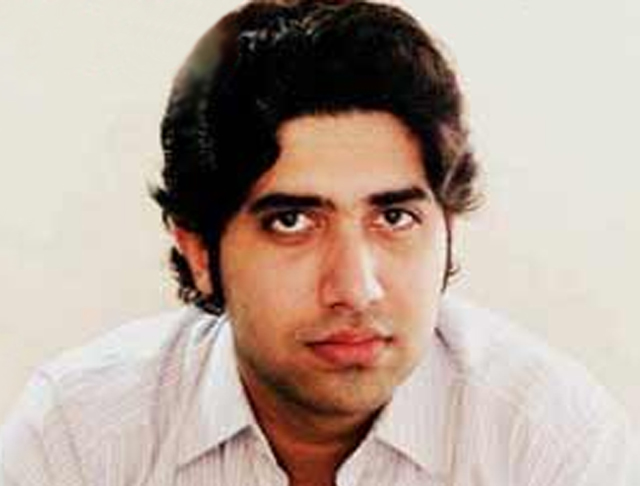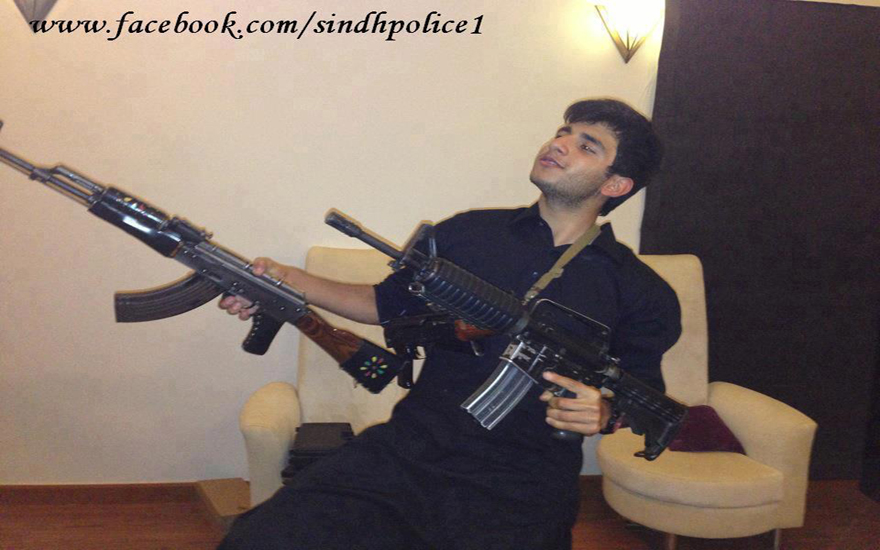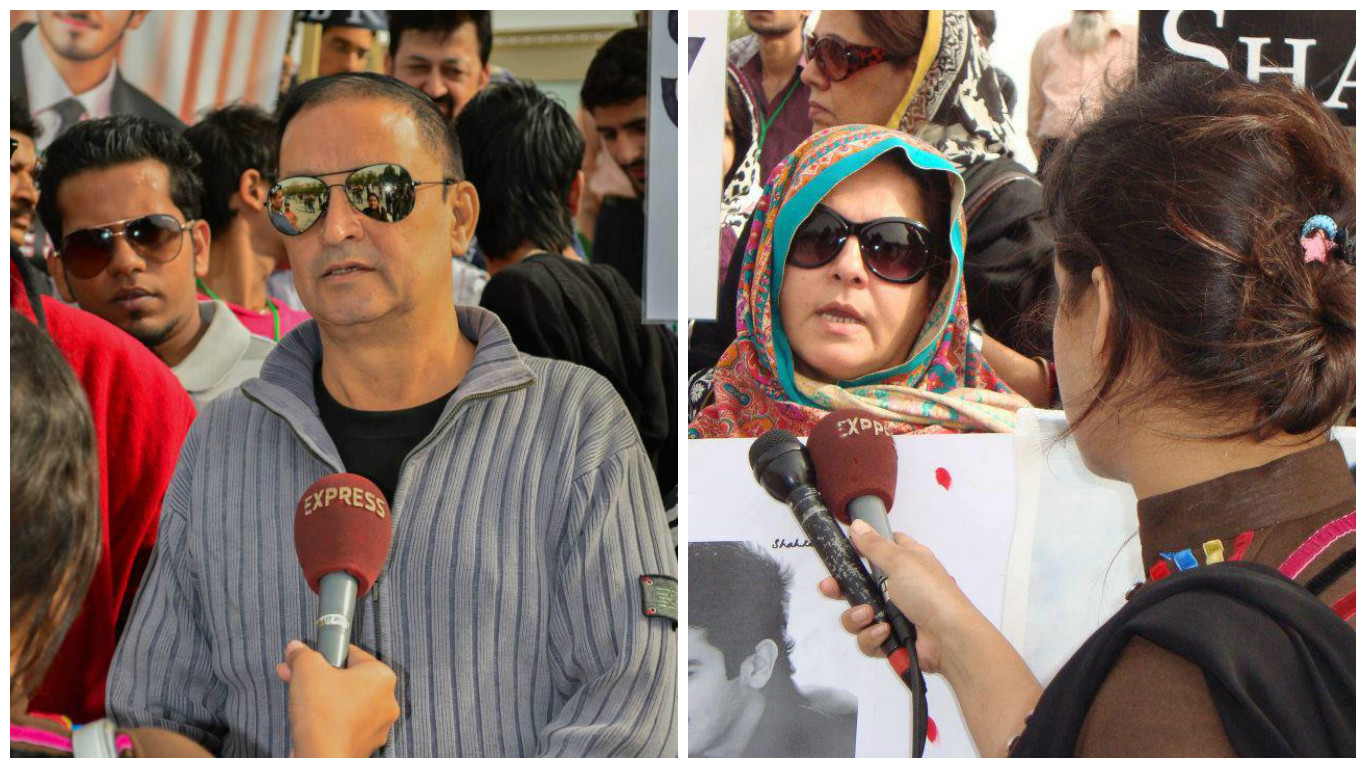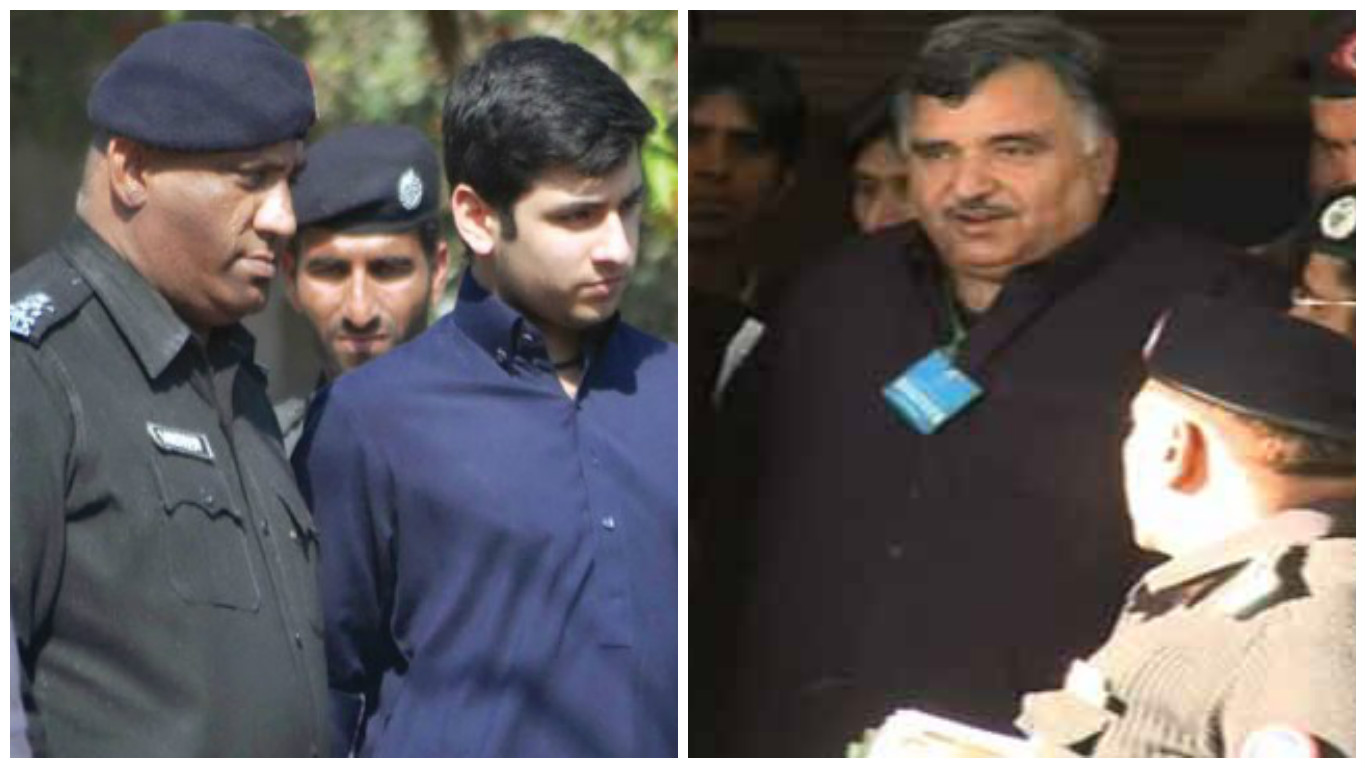In Cold Blood
By Nudrat Kamal | Crime | Published 12 years ago
We live in city where every morning, the papers carry news of dozens of nameless people who were killed the day before. Shahzeb Khan’s tragic murder could have easily been just another statistic, quickly fading from the consciousness of a public that has grown accustomed to such atrocities. Instead, in the month following his death, the incident rapidly gained public attention, with the media closely following the story as it progressed.
It could be argued that this attention was because the alleged murderer, Shahrukh Jatoi, belongs to one of Pakistan’s most influential feudal families, with connections to people in powerful positions. Or it could be because this case was one of the first in the country to spark a strong online protest movement that successfully mobilised civil society to pressurise the authorities into taking action. Either way, every new development in the investigation — the fact that Shahrukh was able to escape to Dubai despite an FIR naming him as the prime suspect; the first official medical report that declared Shahrukh a minor even though his father, Sikandar Jatoi, had initially told the media that he was a university student — raises questions about the effectiveness of a justice system weakened by corruption and inefficiency.
Shahzeb Khan was killed on December 25, on the night of his sister’s wedding. According to A, a close family member of Shahzeb, who spoke to Newsline on condition of anonymity, Shahzeb had just dropped off his other sister at their residence in Defence and was in the car, waiting for her to go inside when he saw the servant of their neighbour, Nawab Siraj Talpur, approach her and start to verbally harass her. Angered, Shahzeb entered into an argument with him, leading to a physical altercation. By then, Siraj Talpur and Shahrukh Jatoi had also arrived on the scene, accompanied by their armed guards, as had Shahzeb’s father, DSP Aurangzeb Khan, who tried to settle the dispute and made Shahzeb apologise. The commotion had gathered a small crowd of people from Shahzeb’s apartment building and the neighbouring houses. According to A, the apology had no effect on Siraj and Shahrukh, the latter of whom grabbed a gun from a guard and fired into the air thrice. Shahrukh told Shahzeb’s father that he was going to kill his son, if not that day, then the day after. “He shouted, ‘You don’t know who I am or what I can do.
I’m Shahrukh Jatoi, son of Sikandar Jatoi,’” A says. “It was fortunate, in a way, that he identified himself in this manner in front of so many witnesses, since we did not know who he was before this.” After a while, with the argument seemingly over, Shahzeb got into his car and started driving away. “When Shahrukh also got into his car and drove away, we didn’t think he was going after Shahzeb. We thought it was over, that he had made his point by firing in the air,” A says. But it wasn’t over. Shahrukh followed Shahzeb’s car towards the end of the street and shot at the car until it flipped over. Then he got out and shot at Shahzeb again, this time from a closer range. By the time Shahzeb was taken to the hospital, he was dead.
A tells Newsline that they faced problems with the investigation right from the beginning. Aurangzeb Khan immediately got an FIR registered at the Darakhshan Police Station, under whose jurisdiction the crime falls. However, later they found out that the FIR which they made Aurangzeb sign had crucial details of the account changed, leading him to get another FIR registered. DSP Waseem Khawaja, who allegedly tampered with the FIR by changing the time and nature of the incident, was not removed from his position despite IGP Fayyaz Leghari’s statement to the court that he would be transferred. A also mentions instances of the police’s negligence and lack of cooperation in the initial stages of the investigation, explaining how they were reluctant to collect evidence. They refused to take pictures of Shahzeb’s bullet-ridden car and instead, asked the family to provide such photographic evidence. “Initially, the police were not willing to do any investigating at all,” A says. “If they rely on us to collect all of the evidence, then what is the purpose of their jobs?” Much more troubling than the negligence are the indications of corruption at different stages of the investigation. The doctor who performed the post mortem on Shahzeb’s body later turned out to be an acquaintance of the family, and according to A, told them that he had been offered money in exchange for stating in the report that Shahzeb was drunk at the time of his death.
Nevertheless, the investigation has made significant progress, particularly after Chief Justice Iftikhar Muhammad Chaudhary took suo motu notice of the case on January 1. Twenty-two-year-old Siraj Talpur, his 21-year-old brother Sajjad Talpur and his servant, 23-year-old Ghulam Murtaza were arrested soon after the suo motu notice on January 5. Shahrukh Jatoi, who had managed to escape to Dubai just hours after the murder, was arrested with the help of Interpol and UAE authorities on January 14. Upon his return to Pakistan, Shahrukh was charged by the FIA for leaving the country illegally. Reportedly, Shahrukh used an “emergency passport” under the name Nawab Jatoi and his father made the excuse that he went to Dubai to seek medical treatment. In light of all this, the Supreme Court has directed the police to arrest the people who helped the suspect flee the country but despite these arrests and charges, it’s still a long battle ahead for Shahzeb’s family. “The suo motu notice has helped tremendously, of course,” A says. “But unless people at the lower levels of the system follow orders and do their jobs correctly, and rise above political pressure, the suo motu notice alone won’t bring justice.”
Protests in Karachi and Lahore saw hundreds of Shahzeb’s friends, sympathisers and supporters mobilised in their demand for justice. The protest in Karachi, which took place outside the Press Club, was also attended by several politicians. Immediately after the protests, the Supreme Court took suo motu notice of the case, making it one of the strongest examples of successful citizen activism in Pakistan in recent times.
There are several things standing in the way of what should be an open-and-shut case, the most important of them being the issue of Shahrukh Jatoi’s age. If declared a minor, Shahrukh would be tried under juvenile justice laws and, therefore, escape the death penalty, should the courts find him guilty. It is simple enough to scientifically approximate a person’s age by conducting a bone ossification test. The test studies the development of a person’s bones and joints to establish a fairly accurate estimate of their age. It does not, however, determine the exact age and instead provides a narrow range of a margin of a couple of years. However, in the absence of legal documents the bone ossification test is still considered the most reliable method of determining age. In Shahrukh Jatoi’s case, however, concerns were voiced that the results of the test might not be completely valid, given the rumours of the Jatoi family’s far-reaching influence. The first medical test report, submitted to the court, declared Shahrukh Jatoi to be 17 years of age, and therefore a minor. Based on this report, he was sent to juvenile jail. However, an anti-terrorism court rejected the report on the grounds that even though the court had directed the medical superintendent of the Services Hospital to conduct the test, the report of the ossification test had instead been prepared by a police surgeon. The court ordered a fresh test to determine Shahrukh Jatoi’s age, and a team of doctors appointed by the provincial health department have deduced that Shahrukh is an adult since he has all his wisdom teeth.
But while Shahzeb Khan’s brutal murder and subsequent investigation has brought to light the extent of power enjoyed by the rich and influential in Pakistan, and the inadequacies of a justice system that favours and protects them, it has also revealed a more positive side of our society: the fact that people are willing to rise up and protest against such unspeakable crimes, and that such collective efforts can sometimes be successful in pushing the state to take action. Soon after Shahzeb’s death, a close relative B made a Facebook page titled “In Memory of Shahzeb Khan,” a page made to honour his memory, which became instrumental in highlighting the story and mobilising people for protest. B tells Newsline, “I thought the page would be just for family and friends, sharing their memoires of Shahzeb, but it has become a national platform for a demand for change.” The page was shared by Shahzeb’s friends, and quickly got the attention of people on Facebook, with more than 130,000 people having joined the page as a sign of solidarity with Shahzeb’s family in their pursuit of justice. But just because an issue is being talked about on social media doesn’t always mean it will translate into people actually taking to the streets in protest. However, with this particular online protest movement, it did. Protests in Karachi and Lahore saw hundreds of Shahzeb’s friends, sympathisers and supporters mobilised in their demand for justice. The protest in Karachi, which took place outside the Press Club, was also attended by several politicians, including Muttahida Qaumi Movement’s Raza Haroon, Pakistan Muslim League-Nawaz’s Nehal Hashmi and Pakistan Tehreek-i-Insaaf’s Dr Arif Alvi. Immediately after the protests, the Supreme Court took suo motu notice of the case. It is one of the strongest recent examples of successful citizen activism in Pakistan, and B acknowledges the instrumental role social media played in bringing it about. “Without social media, there’s no way we would have been able to garner so much support.”
But alongside the supporters’ voice for justice are other voices raising concerns about why the same kind of public pressure is not visible in cases equally, if not more, gruesome than Shahzeb Khan’s. Others affected by similar tragedies may not have the tools to mobilise the community and the media to effectively move authorities to take action, and therefore might be denied justice. One such case is that of Jamal Qadri, the student who was killed in Lyari on January 4. Despite protests by civil society, the suspects behind his murder have yet to be apprehended, and authorities have not taken any notice of the issue. The very fact that those affected by such tragedies demand suo motu notice indicates the extent to which people have lost faith in the state’s justice system. The arbitrary nature of the power of suo motu exercised by the Supreme Court is not exactly indicative of the improvement in the system.
 Shahrukh Jatoi, who escaped to Dubai just hours after the murder, was arrested with the help of Interpol and UAE authorities on January 14 and upon his return to Pakistan he was charged by the FIA for leaving the country illegally. He used an “emergency passport” under the name Nawab Jatoi and the Supreme Court has directed the police to arrest the people who helped him flee the country.
Shahrukh Jatoi, who escaped to Dubai just hours after the murder, was arrested with the help of Interpol and UAE authorities on January 14 and upon his return to Pakistan he was charged by the FIA for leaving the country illegally. He used an “emergency passport” under the name Nawab Jatoi and the Supreme Court has directed the police to arrest the people who helped him flee the country.
Shahzeb Khan’s killers may or may not be brought to justice. But in a country where much is going wrong, it is imperative that the court delivers in this particular instance. For it would be reassuring to know that even the influential are not above the law. However, beyond Shahzeb Khan’s case, the need for change in the justice system still remains.
Nudrat Kamal teaches comparative literature at university level, and writes on literature, film and culture.






